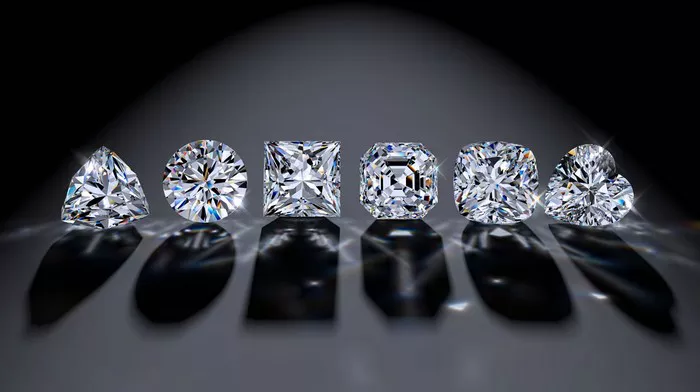In the realm of precious gemstones, diamonds reign as the ultimate symbol of luxury, beauty, and eternal love. However, within this world of brilliance and allure, not all diamonds are created equal. One of the most crucial factors influencing a diamond’s value and visual appeal is its cut. From the classic round brilliant to the elegant princess cut, each diamond shape exudes its own unique charm and charisma. But when it comes to determining which diamond cut commands the highest price tag, a myriad of factors come into play, ranging from the rarity of the cut to market demand and consumer preferences.
Understanding the Intricacies of Diamond Cuts
Before delving into the intricacies of diamond pricing, it’s essential to grasp the fundamentals of diamond cuts. The cut of a diamond refers to its proportions, symmetry, and polish, all of which profoundly impact its brilliance, fire, and scintillation. While there are various diamond shapes available in the market, the most popular ones include round, princess, cushion, emerald, and Asscher cuts, among others. Each cut is crafted with precision to maximize the diamond’s ability to reflect and refract light, resulting in that coveted sparkle that captures the hearts of many.
Factors Influencing Diamond Prices
When it comes to determining the price of a diamond, several factors come into play, with the cut being one of the most significant influencers. However, it’s essential to note that the cut alone does not dictate a diamond’s value. Other factors such as carat weight, color, and clarity also play a crucial role in determining its price. That said, the cut of a diamond can significantly impact its perceived value and desirability in the market.
Rarity and Demand: The Driving Forces Behind Diamond Prices
One of the primary reasons certain diamond cuts command higher prices than others lies in their rarity and consumer demand. Historically, round brilliant diamonds have been the most sought-after and consequently, the most expensive. This is partly due to their unparalleled brilliance and fire, which result from their precise cut proportions. Round diamonds are also the most popular choice for engagement rings, further driving up their demand and prices in the market.
On the other hand, fancy-shaped diamonds such as princess, cushion, and emerald cuts tend to be less expensive than round diamonds. While they may lack the traditional brilliance of round diamonds, they offer a unique and distinctive appeal that appeals to many consumers. However, within the realm of fancy-shaped diamonds, certain cuts may command higher prices due to their rarity and popularity.
The Influence of Proportions and Symmetry
In addition to rarity and demand, the proportions and symmetry of a diamond cut also play a significant role in determining its price. Diamonds that are cut to ideal proportions with excellent symmetry and polish are more valuable than those with inferior cuts. This is because well-cut diamonds exhibit maximum brilliance and fire, making them more visually appealing to consumers.
For example, a round brilliant diamond with excellent cut proportions, such as those graded by the Gemological Institute of America (GIA) as Triple Excellent, will command a premium price compared to a diamond with fair or poor cut grades. Similarly, fancy-shaped diamonds that are cut with precision and attention to detail will also fetch higher prices in the market due to their superior visual appeal.
See Also: How to Tell If a Princess Cut Diamond Is Real
Market Trends and Consumer Preferences
Beyond the technical aspects of diamond cuts, market trends and consumer preferences also play a crucial role in determining which diamond cuts are more expensive. Over the years, there has been a shift in consumer preferences towards unique and unconventional diamond shapes, such as oval, pear, and marquise cuts. As a result, these fancy-shaped diamonds have seen an increase in demand, leading to higher prices in the market.
Moreover, cultural and societal influences also shape consumer preferences when it comes to diamond cuts. For instance, certain diamond shapes may be more popular in specific regions or cultures due to cultural traditions or symbolic meanings associated with them. As such, diamonds that align with these cultural preferences may command higher prices in their respective markets.
Investing in Diamond Cuts: Considerations for Buyers
For those considering investing in diamonds, understanding the intricacies of diamond cuts is essential to making informed purchasing decisions. While round brilliant diamonds have historically been considered a safe investment due to their consistent demand and value retention, fancy-shaped diamonds can also offer lucrative investment opportunities, particularly for collectors and enthusiasts.
When evaluating the potential investment value of a diamond cut, buyers should consider factors such as rarity, demand, and market trends, as well as the diamond’s overall quality and craftsmanship. Additionally, working with reputable jewelers and obtaining certifications from trusted gemological laboratories can provide assurance of a diamond’s authenticity and quality, further safeguarding the investment.
Conclusion
In conclusion, the question of which diamond cut is more expensive is a multifaceted one, influenced by a myriad of factors ranging from rarity and demand to market trends and consumer preferences. While round brilliant diamonds have historically commanded the highest prices due to their unparalleled brilliance and popularity, fancy-shaped diamonds are gaining traction in the market, offering unique and distinctive alternatives for consumers.
Ultimately, the value of a diamond cut is subjective and varies depending on individual preferences and priorities. Whether investing in a timeless round brilliant diamond or opting for a modern fancy-shaped cut, buyers should prioritize quality, craftsmanship, and authenticity to ensure their investment stands the test of time. By understanding the intricacies of diamond cuts and staying informed about market trends, buyers can make confident and informed decisions when purchasing diamonds.

